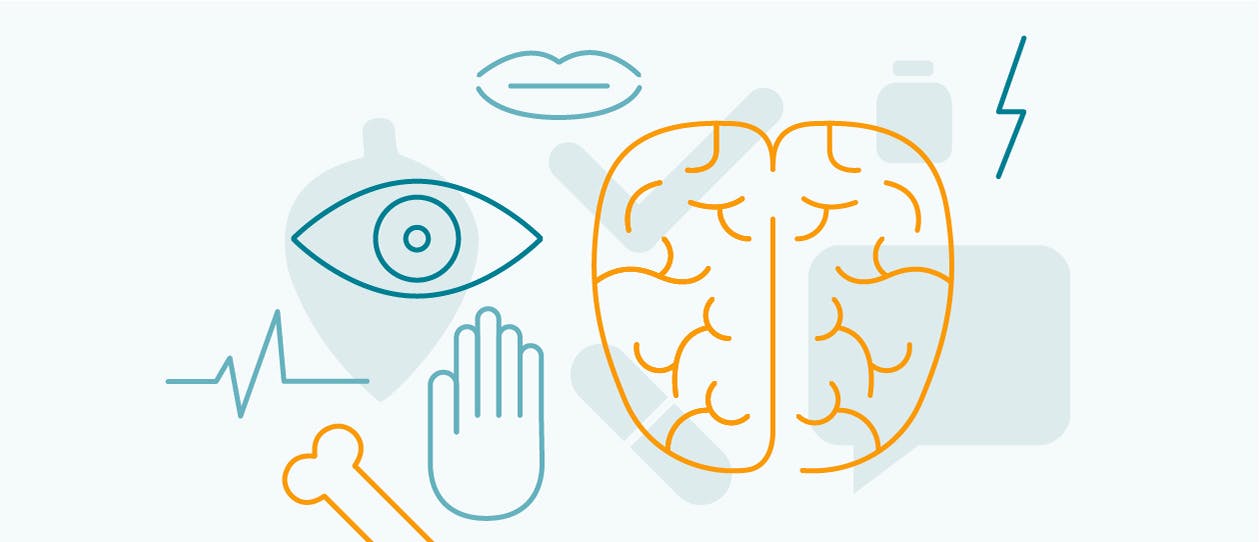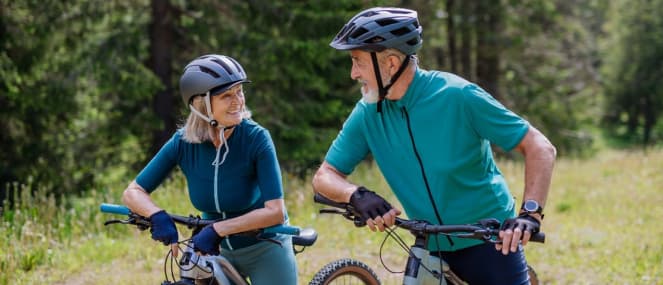
- Health hub/
- Tips & Advice on Improving your Energy Levels/
- Sport Injuries Symptoms And Causes


- Cuts and grazes, often on the knees or hands.
- Bruises, which cause discolouration, tenderness and sometimes swelling of the tissues beneath the skin.
- Sprains and strains, with pain, stiffness and swelling of the affected tissue (commonly the ankle, groin, knee, hamstring or wrist). Bruising may also be present.
- Shin splints, which cause pain and tenderness along the bones of the shin (especially during and after running). Redness and inflammation of the skin in the affected area also sometimes occurs.
- Tendonitis, symptoms of which include pain, swelling, stiffness, and weakness of the affected area – often the shoulder, wrist, knee, shin or heel. The range of motion may also be reduced, and the tissue may feel warm or hot to touch.
- Fractures, symptoms of which may include pain, swelling and an inability to use the affected body part. If the nose is affected, bleeding is an additional common symptom.
- Concussion, which may cause headache, head pain, confusion, dizziness, nausea and memory problems. Loss of consciousness sometimes occurs.
Sports injuries are often caused by some kind of trauma to the tissue, for example, direct impact with the ground or another player. In other cases, tissue damage occurs when a joint is forced to move in a way that it is not physically capable of (for example, a sprain may be caused by rolling over on your ankle).
Injuries may also develop over a longer period, for example, due to over-use of particular muscles or joints. These types of injuries may be the result of using poor technique, or the ongoing use of inappropriate footwear or sporting equipment. For example, tendonitis of the elbow may due to a tennis racquet that is too heavy, or using an incorrect golf swing.
Stress fractures tend to be caused by running or jumping on hard surfaces, and most often affect the bones of the legs and feet.
Similarly, high impact activities such as running on concrete or other hard surfaces can contribute to the development of shin splints, as can over-training (e.g. training beyond your fitness level), wearing poorly fitting running shoes, running with poor technique, or having flat feet. The pain may be caused by the muscles and tendons of the leg causing inflammation by tugging on the bone, or may be due to a stress reaction from the bone itself.
Tendonitis is an inflammation of a tendon, a band of connective tissue that connects a bone and a muscle. It can be associated with a wide range of activities that put repetitive strain on the tendons, including sporting activities such as running, jumping, or lifting heavy weights. Tendonitis is more likely to occur if you don’t warm up properly prior to exercising, and being obese is also a risk factor, as it increases the amount of strain on the tendons.
- Call an ambulance immediately if you suspect someone may have a neck or spinal injury, has broken a bone, experienced a prolonged concussion, or has an injury to the eye or abdomen.
- Seek medical advice for other sporting injuries in order to ensure the problem is correctly diagnosed and appropriately treated.
- The application of appropriate first aid measures in the time immediately following an injury are vital. Consider doing a first aid course so that you’re able to respond to any unforeseen events, and always keep a first aid kit handy.
- For sprains and strains, follow the RICE protocol:
- Rest the affected area.
- Ice packs should be applied for 15 minutes every two hours for 1-2 days after the injury.
- Compression should be firmly applied to the affected area. Ideally, bandage the injury tightly, making sure that the bandage extends above and below the site of the injury.
- Elevate the affected part so that it is higher than the heart.
- Don’t apply heat to sprains or strains, don’t massage the area and don’t drink alcohol; these practices may aggravate the swelling.
- For suspected fractures:
- Do not move the person, unless their location puts them in danger of further injury.
- Address any bleeding by applying compression to the wound with a clean dressing, and keep the wound covered once the bleeding has stopped. (Apply pressure to the edges of the wound if there is a bone protruding from it).
- Immobilise the affected body part with a splint and/or sling, but don’t attempt to straighten a broken limb. If the suspected fracture is in one leg, tying it to the other leg forms an effective splint. (Bandages or other ties should be placed above and below the injury).
- Elevate the affected area if possible, and apply an ice pack to relieve pain and inflammation.
- Call for medical assistance.
- For nosebleeds, sit with the head forward, and use your fingers to pinch the nostrils together for at least 10 minutes. Seek medical advice if bleeding persists for more than half an hour.
- If you lose a tooth, clean it with water or milk and take it to a dentist immediately.
- If you’re experiencing shin splints or tendonitis, apply an icepack to the affected area for 10-15 minutes several times a day, and rest the affected body part.
- In some cases, physiotherapy and strengthening and/or conditioning exercises may be required to restore the injured part to its original condition. It may also be useful to switch to a different form of exercise while your injury heals. For example, if you’re suffering from shin splints, swimming will allow you to stay active while your legs repair .
- Take steps to prevent injuries before they happen by:
- Stretching and warming up before you start, and cooling down with gentle sustained stretches after you’re finished.
- Allowing sufficient recovery time between bouts of activity.
- Paying attention to your technique.
- Using appropriate shoes, helmets, mouth guards and other protective gear . Shock absorbing insoles may be useful if you’re a runner.
- Maintaining your overall health and fitness, and exercising at an intensity that is appropriate to your fitness level.
- Training on flat soft surfaces (such as grass), rather than on concrete or uneven ground.
- Taping or strapping any joints that have bothered you in the past.
- Drinking adequate fluid before, during and after you exercise to prevent dehydration. In addition, try to avoid exercising in hot conditions.
Drink 6 to 8 glasses of water every day, and ensure you are receiving plenty of potassium and magnesium by eating a well-balanced diet. Fruits such as apricots (especially dried), bananas and raisins contain high amounts of potassium, whilst nuts and soya beans are good sources of magnesium.
Warming up before starting your sports activity is vital to condition your muscles. This includes some slow walking, light rebounding, then stretching. You should take part in your chosen sport at least 3 to 4 times per week to maintain your fitness levels.
Injuries are more likely to occur when you are dehydrated. Always drink plenty of fluids before, during and after exercise, and consider an electrolyte replacement drink if you sweat heavily or suffer from muscle cramps. The minerals magnesium and potassium may also help to prevent muscle cramp.
- It is important that any sports injury is investigated and diagnosed by your doctor to ensure that you receive the appropriate treatment.
- Don’t return to your sporting activity after an injury until your healthcare professional gives you the go ahead. In some cases, returning to sport too early can exacerbate the damage and delay recovery.




